Dominique Luchart's Blog, page 593
June 17, 2021
India’s human spaceflight plans coming together despite delays, ,
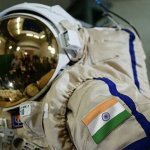
So far, sending humans into space has been limited to the space programs of only three countries: the U.S., Russia (inheriting that of the former Soviet Union), and, joining them in the 21st century, China. But a fourth is poised to follow: the Indian Space Research Organization (ISRO), India’s space exploration agency.
ISRO isn’t afraid to dream big. The agency’s head, K. Sivan, has talked about space stations and moonwalks. ISRO hopes that the long arc toward those goals can begin with its first program of crewed missions, Gaganyaan (derived from Sanskrit, meaning “sky-vehicle”). But Gaganyaan’s timetable remains murky — largely thanks to the COVID-19 pandemic.
Certainly, all the pieces are coming into place. ISRO’s first four would-be space travellers recently spent about a year in Russia, familiarizing themselves on old Soyuz capsules and simulating spaceflight conditions in centrifuges and pressure chambers. Now, they’ve returned to India, where they’ll begin training on the Gaganyaan capsule itself.
Related: India looks beyond the moon to Mars, Venus and astronaut missions
To ensure that its space travellers are in good health, ISRO in April unveiled an agreement with its French counterpart. India and France have a long history of space cooperation, and France has plenty of space medicine knowledge that it has previously brought to programs like the International Space Station.
“It is only logical that Indian flight medical professionals train and learn from the French,” Mukund Kadursrinivas Rao, chief executive of the Centre for Spatial Analytics and Advanced GIS in Bangalore, India, told Space.com.
ISRO hopes that such international partnerships will help build up the technology it needs to send up humans for the long term. To wit, ISRO has unveiled Indian space food and a humanoid robot for uncrewed flights. Rao says that, closer to home in India, ISRO has tested other key aspects of Gaganyaan, such as its launch abort and re-entry systems.
But looming over all of it is the tragic specter of COVID-19; India is now reopening after a debilitating second wave of the disease. ISRO had dedicated some of its resources to helping the country’s strained healthcare system — for instance, supplying liquid oxygen and medical equipment.
For the meantime, many of the agency’s employees had to stay at home. “That was a difficult step, I think,” Rao said, explaining that it disrupted important tasks like assembling and testing the spacecraft, activities that need to be done in person.
“There are also many industries contributing to the missions, and they too would be affected,” Rao said.
Plans called for the Gaganyaan program to kick off with two uncrewed test launches, the first set for December 2020. That date has come and gone; now, it appears the first launch will occur near the end of 2021, with the second coming in 2022.
After that, the third Gaganyaan mission would carry ISRO’s historic first spacefarers to orbit. At least some Indian government officials wanted that crewed launch to take off in August 2022, around the 75th anniversary of modern India’s independence. But a government minister recently said it won’t happen before 2023.
One piece that remains is ensuring that the spacecraft — and the spacefarers on board — are never out of contact with controllers on Earth. ISRO’s ground stations are concentrated in the Indian Ocean and Southeast Asia. To patch in the rest of the globe, ISRO is planning to launch a pair of data-relay satellites. Such spacecraft will be crucial even for the uncrewed missions, according to Rao.
Gaganyaan isn’t ISRO’s only project to face delays. ISRO’s next moon mission, Chandrayaan-3 — which seeks to put a rover on the moon after its last attempt crashed on the lunar surface in September 2019 — was scheduled to take off later in 2021. Now, it seems to have slipped into 2022.
Follow us on Twitter @Spacedotcom or Facebook.
The post India’s human spaceflight plans coming together despite delays, , appeared first on NEWDAWN Blog.
Shenzhou 12 mission docks at Chinese space station with 3 astronauts, ,
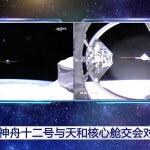
Three astronauts have arrived at China’s new space station.
The Shenzhou 12 mission docked with Tianhe (“Harmony of the Heavens”), the Chinese space station core module, around 4:25 a.m. EDT (0825 GMT) Thursday (June 17), seven hours after lifting off from Jiuquan Satellite Launch Center in northwest China.
The three Shenzhou 12 astronauts — Nie Haisheng, Liu Boming and Tang Hongbo, all men — will live on board the 54-foot-long (16.6 meters) Tianhe for the next three months, testing its various systems and getting the module fully up and running.
Related: The latest news about China’s space program
The Shenzhou 12 launch was the third in less than two months for China’s space station program. Tianhe’s April 28 liftoff kicked things off. The robotic Tianzhou 2 freighter delivered more than 6.6 tons of supplies to the module a month later and remains docked to Tianhe today.
Eight more launches will be required to finish construction of the space station, Chinese officials have said. Two will loft “lab modules” that will attach to Tianhe, forming the final T-shaped station. The assembly phase, which is expected to wrap up by the end of 2022, will also include three more cargo launches and three additional crewed missions.
Shenzhou 12 was China’s first crewed space mission in nearly five years. The most recent one, Shenzhou 11, sent three astronauts to the Tiangong-2 space lab for a one-month stay in late 2016.
Tiangong 2 and its predecessor, Tiangong 1, were built and launched to help lay the foundation for the new orbital outpost, which will be about 15% as massive as the 450-ton International Space Station when all is said and done. China’s space station is expected to be operational for at least 10 years.
To read more about the current mission and China’s space station, read our Shenzhou 12 launch story.
Mike Wall is the author of “ Out There ” (Grand Central Publishing, 2018; illustrated by Karl Tate), a book about the search for alien life. Follow him on Twitter @michaeldwall. Follow us on Twitter @Spacedotcom or Facebook.
Join our Space Forums to keep talking space on the latest missions, night sky and more! And if you have a news tip, correction or comment, let us know at: community@space.com.
The post Shenzhou 12 mission docks at Chinese space station with 3 astronauts, , appeared first on NEWDAWN Blog.
China’s Shenzhou 12 spacecraft docks at space station with 3 astronauts, ,
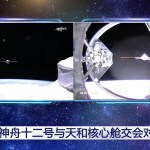
Three astronauts have arrived at China’s new space station.
The Shenzhou 12 mission docked with Tianhe (“Harmony of the Heavens”), the Chinese space station core module, around 4:25 a.m. EDT (0825 GMT) Thursday (June 17), seven hours after lifting off from Jiuquan Satellite Launch Center in northwest China.
The three Shenzhou 12 astronauts — Nie Haisheng, Liu Boming and Tang Hongbo, all men — will live on board the 54-foot-long (16.6 meters) Tianhe for the next three months, testing its various systems and getting the module fully up and running.
Related: The latest news about China’s space program
The Shenzhou 12 launch was the third in less than two months for China’s space station program. Tianhe’s April 28 liftoff kicked things off. The robotic Tianzhou 2 freighter delivered more than 6.6 tons of supplies to the module a month later and remains docked to Tianhe today.
Eight more launches will be required to finish construction of the space station, Chinese officials have said. Two will loft “lab modules” that will attach to Tianhe, forming the final T-shaped station. The assembly phase, which is expected to wrap up by the end of 2022, will also include three more cargo launches and three additional crewed missions.
Shenzhou 12 was China’s first crewed space mission in nearly five years. The most recent one, Shenzhou 11, sent three astronauts to the Tiangong-2 space lab for a one-month stay in late 2016.
Tiangong 2 and its predecessor, Tiangong 1, were built and launched to help lay the foundation for the new orbital outpost, which will be about 15% as massive as the 450-ton International Space Station when all is said and done. China’s space station is expected to be operational for at least 10 years.
To read more about the current mission and China’s space station, read our Shenzhou 12 launch story.
Mike Wall is the author of “ Out There ” (Grand Central Publishing, 2018; illustrated by Karl Tate), a book about the search for alien life. Follow him on Twitter @michaeldwall. Follow us on Twitter @Spacedotcom or Facebook.
Join our Space Forums to keep talking space on the latest missions, night sky and more! And if you have a news tip, correction or comment, let us know at: community@space.com.
The post China’s Shenzhou 12 spacecraft docks at space station with 3 astronauts, , appeared first on NEWDAWN Blog.
Zens’ latest battery pack can create a wireless charging sandwich,
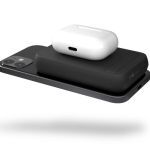
Zens’ new battery pack has a wireless charger on both sides, allowing you to charge two Qi-compatible devices simultaneously in what can only be described as a “charging sandwich.” The Dual Powerbank was announced alongside a trio of other battery packs including the Magnetic Single Powerbank, the Single Powerbank with Stand (which can itself be wirelessly charged, as well as wirelessly charge other devices), and the 10,000 mAh Powerbank with Stand.
Although you could theoretically use it to charge two Qi-compatible phones, the intended use case appears to be charging an iPhone along with an accessory like a pair of AirPods. That’s because one side of the battery pack includes a MagSafe connection, which should keep it centered on iPhone 12 devices featuring the embedded magnets. However, the accessory isn’t capable of fast charging at MagSafe’s 15W maximum, instead it’s limited to 7.5W when charging an iPhone.
Otherwise, the Dual Powerbank includes a USB-C port for charging its 4,000 mAh battery, as well as a small kickstand on one side so you can keep your phone propped up while it’s charging.
While the likes of Zens and Anker have been quick to make use of Apple’s latest wireless charging tech, the Cupertino company is yet to release a MagSafe battery pack of its own. Bloomberg reported in February that such an accessory is in development at the company, but that it’s facing development issues relating to the iPhone’s software thinking it’s overheating.
Update June 17th, 4:28AM ET: Updated with Zens’ confirmation of iPhone charging speeds.
The post Zens’ latest battery pack can create a wireless charging sandwich, appeared first on NEWDAWN Blog.
OnePlus integrates further with Oppo, if that’s even possible,
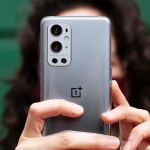
OnePlus CEO Pete Lau has announced a “new journey” for the company including a plan to “further integrate our organization with Oppo.” Lau made the announcement by way of a post on OnePlus’ forums, saying “we’re at a turning point for the future of OnePlus” and “we must adapt as a team and a brand.”
It sounds like a dramatic move for OnePlus, the company Lau started with Carl Pei after ostensibly leaving Oppo in 2013. OnePlus made its name with rebellious marketing and hype-driven online retail strategies, portraying itself as a smarter alternative to bigger smartphone brands.
But it remained a private company with ownership tied up in Oppo and the shadowy BBK Electronics empire, and it was clear from OnePlus’ phones that there were still at least some ties to Oppo. Components like display panels were often seemingly identical, and even supposedly proprietary technology like the Dash fast-charging system was cross-compatible with Oppo’s.
“OnePlus and Oppo are two completely independent companies,” a OnePlus representative told me three years ago by way of explanation. “R&D, finance, sales channels, daily operations, etc operate independently. The two parties share some common investors. OnePlus leases Oppo’s manufacturing line and shares part of the supply chain resources with Oppo.”
Lau says that OnePlus will continue to operate independently, despite the further integration with Oppo. But he hasn’t said exactly what would be integrated, and given the existing commonalities between the two brands’ products, it’s not obvious what this will actually mean for consumers. Lau says OnePlus will continue to operate its own events and customer feedback channels, for example, but adds that Oppo’s greater resources should help OnePlus be more efficient with software updates.
 The Oppo Find X3 Pro.Photo by Sam Byford / The Verge
The Oppo Find X3 Pro.Photo by Sam Byford / The VergeIt’s not a big secret that OnePlus and Oppo have been coming closer to an explicit reunion in recent years. Lau became Oppo’s chief product officer last year while keeping his role at OnePlus, and the two brands merged R&D departments back in January. More recently, OnePlus announced that it’d start using Oppo’s ColorOS for its phones in China.
Reading between the lines, it sounds like OnePlus will essentially be treated like a label of Oppo’s, maintaining a separate consumer-facing operation but with business activities merging in areas beyond product development. Will this manifest itself in tangible changes to OnePlus devices? Who can say.
If you’re a OnePlus fan, though, there’s no reason to view the closer ties as a bad thing. The company has long left its “flagship killer” roots behind, now competing at the high end with expensive “Pro” phones while offering a range of cheaper Nord devices at the low-to-mid range. Oppo, for its part, releases far more phones a year than OnePlus (mostly in Asia), but its high-end flagships are every bit as good. The latest Find X3 Pro is my favorite phone of the year so far.
Whether OnePlus would admit it or not, the company has always been associated with Oppo behind the scenes. The biggest change here is that OnePlus is now saying so out loud — while making the association even tighter.
The post OnePlus integrates further with Oppo, if that’s even possible, appeared first on NEWDAWN Blog.
June 16, 2021
The Atari VCS retro console gets its long-awaited retail release, Jon Porter
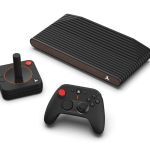
 The “Black Walnut” version of the console, which comes with a joystick and controller. | Image: Atari
The “Black Walnut” version of the console, which comes with a joystick and controller. | Image: AtariThe Atari VCS — a part-desktop PC, part-retro console modeled after the Atari 2600 — is finally available to buy at retail. Atari is selling the console via its own site while Best Buy and Micro Center also have their listings. This isn’t the first time the console has been available to the public (VGC notes that IndieGoGo backers recently received their consoles) but it’s the first time the machine has been available to buy at retail.
The VCS has been a long time coming. Originally teased in 2017 as the “Ataribox,” the project re-emerged the following year , with Atari running an IndieGoGo campaign to fund its development in June 2018. Originally, the console had been due to ship in mid-2019 but reportedly ran into a s…
The post The Atari VCS retro console gets its long-awaited retail release, Jon Porter appeared first on NEWDAWN Blog.
Microsoft is bringing next-gen Xbox games to the Xbox One with xCloud,

Microsoft will let Xbox One owners play next-gen Xbox games through its xCloud service. The news was buried in a blog post recapping Microsoft’s Xbox + Bethesda showcase, with the company confirming plans to leverage Xbox Cloud Gaming (xCloud) for Xbox One consoles. That means the 2013 hardware will be able to play Xbox Series X exclusive games from 2021 — extending the lifecycle of what would normally soon be obsolete boxes.
“For the millions of people who play on Xbox One consoles today, we are looking forward to sharing more about how we will bring many of these next-gen games, such as Microsoft Flight Simulator, to your console through Xbox Cloud Gaming, just like we do with mobile devices, tablets, and browsers,” says Will Tuttle, editor in chief of Microsoft’s Xbox Wire.
Until now, Microsoft had only described xCloud on consoles as a way for players to “try [games] before you download,” but it’s clear the company sees the service as offering much more. Microsoft originally announced Microsoft Flight Simulator as an Xbox One title, before quietly removing references to the Xbox One launch in December. Microsoft recently confirmed Flight Simulator will now launch on Xbox Series X / S consoles on July 27th.
It’s not clear when xCloud game streaming will be available on Xbox One consoles, though. It’s unlikely to be ready in time for the July launch of Microsoft Flight Simulator, and Microsoft’s head of cloud gaming, Kareem Choudhry, previously said xCloud will be integrated into consoles “later this year.”
xCloud availability will provide a welcome boost for Xbox One consoles, particularly as Microsoft is upgrading its server blades to run Xbox Series X hardware later this month. It will give this older hardware a way to play upcoming titles like Starfield, which, like Flight Simulator, will also launch exclusively on the new Xbox Series X / S consoles.
The post Microsoft is bringing next-gen Xbox games to the Xbox One with xCloud, appeared first on NEWDAWN Blog.
Microsoft is bringing next-gen Xbox games to the Xbox One with xCloud, Tom Warren

 Illustration by Alex Castro / The Verge
Illustration by Alex Castro / The VergeMicrosoft will let Xbox One owners play next-gen Xbox games through its xCloud service. The news was buried in a blog post recapping Microsoft’s Xbox + Bethesda showcase, with the company confirming plans to leverage Xbox Cloud Gaming (xCloud) for Xbox One consoles. That means the 2013 hardware will be able to play Xbox Series X exclusive games from 2021 — extending the lifecycle of what would normally soon be obsolete boxes.
“For the millions of people who play on Xbox One consoles today, we are looking forward to sharing more about how we will bring many of these next-gen games, such as Microsoft Flight Simulator, to your console through Xbox Cloud Gaming, just like we do with mobile devices, tablets, and browsers,” says Will Tuttle,…
The post Microsoft is bringing next-gen Xbox games to the Xbox One with xCloud, Tom Warren appeared first on NEWDAWN Blog.
Lincoln vehicles getting hands-free driving feature and native Android,
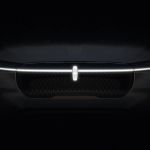
Lincoln, Ford’s luxury brand, has announced plans to make its entire lineup either hybrid or all-electric by 2030 as part of its parent company’s new business plan. The brand will reveal its first all-electric vehicle in 2022, and it expects that half of its global sales will be zero-emissions vehicles by around 2025.
In addition, Lincoln vehicles are gaining a hands-free advanced driver assistance feature based on Ford’s BlueCruise system, though the luxury marque will call its version “ActiveGlide.” New Lincoln vehicles coming in 2023 will also feature Google’s native Android Automotive operating system, which is is being added to “millions” of Ford vehicles that same year.
Four of Lincoln’s electric vehicles will be built on the new flexible EV platform that Ford announced in May when it laid out its new $30 billion “Ford Plus” business plan. That platform can power vehicles with all- or rear-wheel drive setups, and it “allows [Lincoln] to reimagine the interior space, and deliver the power of sanctuary in a new way for our clients,” John Jraiche, the company’s global director for luxury vehicles, said in a briefing.
In April, Lincoln announced a concept car in China called Zephyr that the company said offers a good picture of what its future vehicles might look like, inside and out. It featured a dashboard-spanning screen and new user interface that Lincoln refers to as “Constellation.” Lincoln released a short video on Wednesday of what that new UI might look like. The company said its “designers and engineers are also experimenting with digital scenting techniques, exploring how warm, pleasant scents positively affect the mood and overall well-being of the passengers.”
Lincoln was previously working on co-developing its first all-electric vehicle with EV startup Rivian, of which Ford owns at least a 10 percent stake. But the luxury automaker announced last year at the beginning of the pandemic that the project was canceled. While it seemed at the time that Lincoln had said it was still working with Rivian on another EV, the company said this week that this was a miscommunication. Rivian is still working with Ford on a future product, but its involvement with the Lincoln brand ended last year.
In more near-term news, Lincoln announced that the 2021 Nautilus will receive its first over-the-air software updates starting this summer. Those will upgrade the onboard navigation system and improve the Apple CarPlay experience. Later this year, an update will add hands-free capability for the built-in Amazon Alexa digital assistant.
The post Lincoln vehicles getting hands-free driving feature and native Android, appeared first on NEWDAWN Blog.
Lincoln vehicles getting hands-free driving feature and native Android, Sean O’Kane
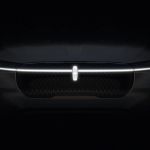

Lincoln, Ford’s luxury brand, has announced plans to make its entire lineup either hybrid or all-electric by 2030 as part of its parent company’s new business plan. The brand will reveal its first all-electric vehicle in 2022, and it expects that half of its global sales will be zero-emissions vehicles by around 2025.
In addition, Lincoln vehicles are gaining a hands-free advanced driver assistance feature based on Ford’s BlueCruise system, though the luxury marque will call its version “ActiveGlide.” New Lincoln vehicles coming in 2023 will also feature Google’s native Android Automotive operating system, which is is being added to “millions” of Ford vehicles that same year.
Four of Lincoln’s electric vehicles will be built on the new…
The post Lincoln vehicles getting hands-free driving feature and native Android, Sean O’Kane appeared first on NEWDAWN Blog.



